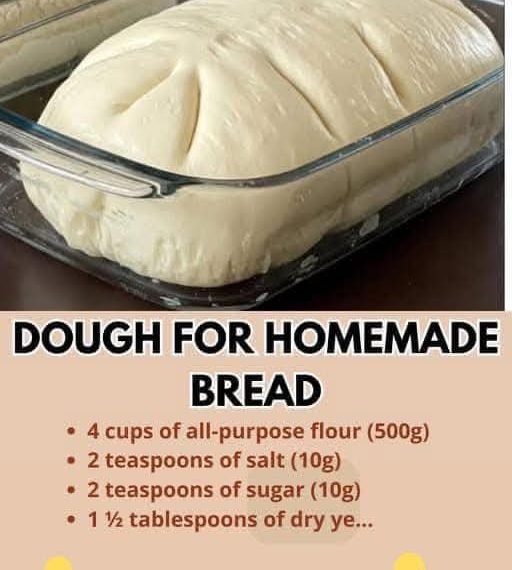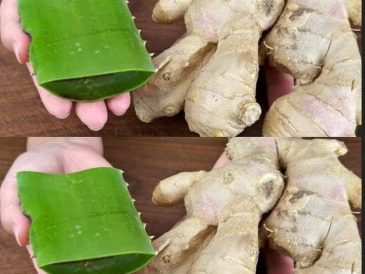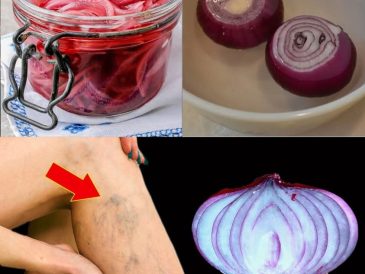To add extra flavor, try mixing in some garlic powder, onion powder, or dried herbs like rosemary or thyme.
These additions can give your bread a savory twist that’s perfect for serving alongside soups or salads.
For a sweeter option, add cinnamon, nutmeg, or even a handful of raisins or dried cranberries. This makes the bread perfect for breakfast or a sweet snack, and it pairs wonderfully with butter or jam.
If you’re looking for a more rustic bread, you can also try baking the dough on a baking stone, which will create a crustier exterior while keeping the inside soft.
For a more indulgent variation, add cheese! Shredded cheddar, mozzarella, or even parmesan can be folded.
into the dough before the first rise. The cheese will melt as it bakes, creating delicious pockets of gooey goodness.
For those who prefer a tangier flavor, try making sourdough bread by incorporating a sourdough starter into the dough.
This adds complexity and a signature tart flavor that’s perfect for sandwiches.
For a gluten-free variation, swap the all-purpose flour for a gluten-free flour blend. You’ll need to add a little extra liquid and possibly a binder like xanthan gum to achieve the right consistency.
For those on a dairy-free or vegan diet, simply omit the butter and substitute with olive oil or coconut oil. The bread will still be soft and delicious.
Lastly, you can add seeds like sunflower or pumpkin seeds to the dough for added crunch and flavor.
Simply sprinkle them over the dough before the second rise or fold them into the dough itself.
Variations for Soft Homemade Bread Dough
One of the great things about this homemade bread recipe is its versatility. You can easily customize.
it to suit your tastes or dietary preferences, creating a variety of bread styles. Here are some fun variations you can try to mix things up:
For a heartier, more nutritious loaf, you can swap part of the all-purpose flour for whole wheat flour.
This will give the bread a nutty flavor and slightly denser texture, but it will still be soft and delicious.
If you want an even denser loaf, try using a 50/50 mix of all-purpose flour and whole wheat flour.
For a savory twist, consider adding herbs and spices to the dough. Dried rosemary, thyme, or oregano can be kneaded into the dough, giving it a wonderful aromatic flavor.
You could also add garlic powder, onion powder, or even grated cheese to infuse extra flavor, creating a more savory loaf that’s perfect for serving alongside soups or salads.
If you’re looking for a sweeter bread, you can make a simple cinnamon-sugar loaf. Add ground cinnamon to the flour mixture, and sprinkle some sugar into the dough during the first rise.
For extra sweetness, fold in raisins or dried cranberries before kneading. This variation makes for a delicious breakfast bread or dessert bread.
For a more luxurious texture, you can add dairy to the recipe. Swapping the vegetable oil for melted butter or even using milk in place of some of the warm water will create a richer.
softer crumb. Adding a tablespoon or two of honey can also give the bread a touch of sweetness while making it even more tender.
If you’re looking for a gluten-free option, you can try substituting the all-purpose flour with a gluten-free flour blend. Be aware that you may need to add additional.
binders like xanthan gum or guar gum to help the dough hold together. The texture will differ slightly, but it can still be a soft, flavorful bread if you get the right gluten-free flour
Tips
The key to perfect bread is in the kneading. Don’t skip this step! Kneading develops the gluten, which is responsible for the bread’s texture.
Make sure to knead for at least 8 minutes, and if you’re unsure, the dough should be elastic and bounce back when pressed.
If you find your dough too sticky to handle, resist the temptation to add too much flour.
Instead, use a dough scraper to help you handle it, or simply wet your hands slightly to make it easier to work with.
Let the dough rise in a warm, draft-free place. If you don’t have a warm spot in your kitchen, you can place the dough in an oven with just the light on. This will create a cozy, warm environment perfect for the dough to rise.
If you’re short on time, you can speed up the rising process by placing the dough in a warm water bath.
Simply fill a larger bowl with warm water and place your bowl of dough inside (make sure the water doesn’t touch the dough). This will help the dough rise faster.
If you want a softer crust, brush the top of the dough with melted butter right after baking. This will add a lovely shine and keep the crust from getting too tough.
For an extra light loaf, you can double the yeast. This will make the dough rise more quickly and result in a fluffier texture.
However, be cautious not to overdo it, as too much yeast can lead to an overly yeasty flavor.
Always preheat your oven before baking to ensure even cooking. A hot oven will give the bread a nice lift, resulting in a beautiful, airy texture.
If you’re using a loaf pan, make sure to grease it well to prevent the dough from sticking. You can also line the pan with parchment paper for easy removal.
Let the bread cool before slicing. This step is important because it allows the crumb to set, preventing the bread from being doughy in the middle.
Tips for Perfect Soft Homemade Bread Dough
Achieving the perfect fluffy bread starts with a few essential tips. The first is about your yeast. Make sure the water you use to activate the yeast is warm, not hot.
If the water is too hot (above 120°F or 49°C), it can kill the yeast and prevent the dough from rising. If it’s too cold, the yeast won’t activate properly. A temperature of 98°F or 37°C is ideal.
When mixing your dough, be careful not to add too much flour. It’s common to want to add flour if the dough feels sticky, but a small amount of stickiness is normal.
If you add too much flour, the bread will become dense rather than soft and fluffy. Aim for a dough that is slightly tacky but still manageable.
Kneading is crucial for developing the gluten, which is what gives the bread its airy structure. Knead the dough for about 8-10 minutes until it becomes smooth and elastic.
If you press your finger into the dough, it should bounce back slightly. If it doesn’t, keep kneading for a little longer.
Let the dough rise in a warm, draft-free place. Yeast thrives in warmth, so place your bowl of dough in a cozy.
corner of your kitchen or an oven with just the light on. This will help the dough rise properly and ensure it becomes light and fluffy.
For the best results, don’t rush the rise time. The dough needs time to double in size during the first rise and puff up a bit during.
the second rise. If you rush it, the bread might end up dense and not as airy. Patience is key!
Lastly, when baking, make sure your oven is fully preheated. A hot oven helps the bread achieve that perfect golden-brown crust while ensuring the inside stays soft and tender.
Also, once the bread is done, let it cool before slicing—it allows the texture to settle and ensures it stays light and fluffy when you cut into it.
Conclusion
Baking homemade bread may seem intimidating, but with this simple recipe, you’ll be able to create soft, cloud-like loaves with ease.
The key lies in the quality of your ingredients, the process of kneading, and giving the dough ample time to rise.
Once you master this dough, you’ll have the flexibility to experiment with different variations to suit your taste, from savory to sweet, simple to complex.
Whether you enjoy it fresh from the oven with butter or use it for sandwiches, this homemade bread is sure to be a hit with everyone.
So roll up your sleeves, gather your ingredients, and get ready to enjoy the satisfying experience of making your own soft, fluffy bread at home.





